Y/CJ/Y Games: Josef Martinovsky Talks About Post Void, and the Road to Keep Driving

I have said it before, and I will say it again, an eye-catching style will command my attention and pique my interest, which is why it should come as no surprise that I am a big fan of Y/CJ/Y Games, and their breakout hit Post Void. From the moment I saw this game in action I was entranced by its break-neck speed and vibrant, chaotic aesthetic. And while I have yet to complete the gauntlet of guns, slides, and gore, I still occasionally boot up the game just to get a hit of that high-octane gameplay.
Being a fan of their work, and seeing how well Post Void has done over the past 2 years, I wanted to learn more about the history of the team, how they came to create the varied video games in their catalog, and their plans for the future. I reached out to Y/CJ/Y over Twitter, and thankfully, the team agreed to meet with me for a conversation about how they have come to create these worlds that so perfectly encapsulate a specific kind of chaos. Whether it be the dark depths of The Aquatic Adventure of the Last Human, the Eldritch army simulator Sea Salt, or the absolutely unhinged speed and style of Post Void, Y/CJ/Y has succeeded in creating multiple memorable gaming experiences, and I was eager to learn about the methods to their madness.
Unfortunately, Christopher Andreasson, one half of the team was unavailable at the time of the interview, but I was still ecstatic to have an opportunity to speak with lead artist and co-founder Josef Martinovsky about his work. Finding time before the world cup finals we sat down and through the magic of the world-wide-web, had a wonderful conversation about a variety of topics ranging from feelings of self-doubt, to the insanity of seeing your fictional creations come to life.
Starting the interview off, I wanted to know how long Y/CJ/Y had been a team, more specifically, I wanted to know if the team had changed over the years. So I started off by asking if Y/CJ/Y had always been just him and Christopher?
JM: Well, so far, we’ve always worked with our friend Karl Flodin who does the music, but for Post Void, we actually did all the music together, like a band. But otherwise, for Aquatic Adventure and then for Sea Salt, he did the music. I think we just maybe helped, like, I think we sat together and recorded some stuff together. But then he went and did all the stuff on his own again.
It was very cool to learn that Y/CJ/Y games had always been a tight-knit unit. With the main leg of the work being completed by Josef and Christopher, with Karl adding in that much needed audio atmosphere. In my experience, a lot of smaller teams see their members wearing many hats. With this in mind, I asked Josef, from conception to creation, did they share the load or was it more so that one person handled the art while the other handled the code?
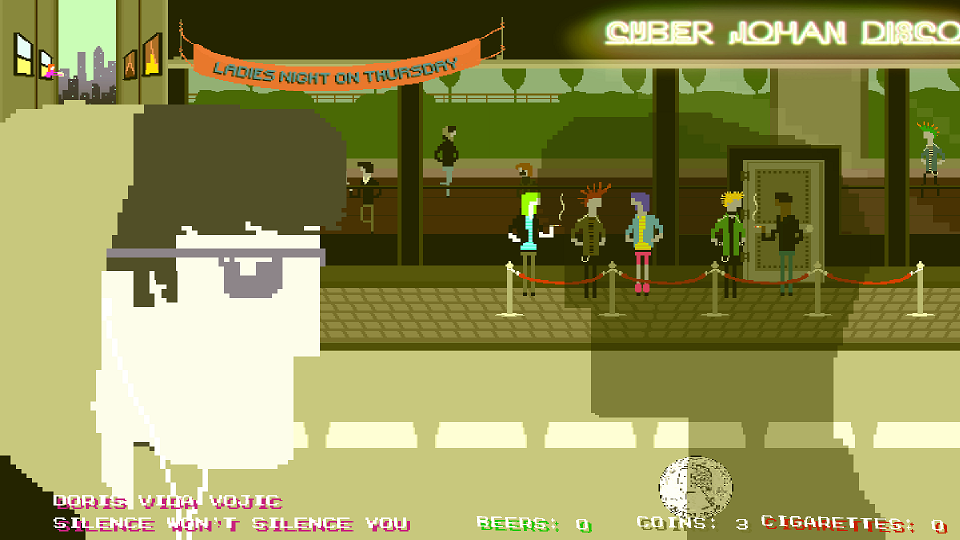
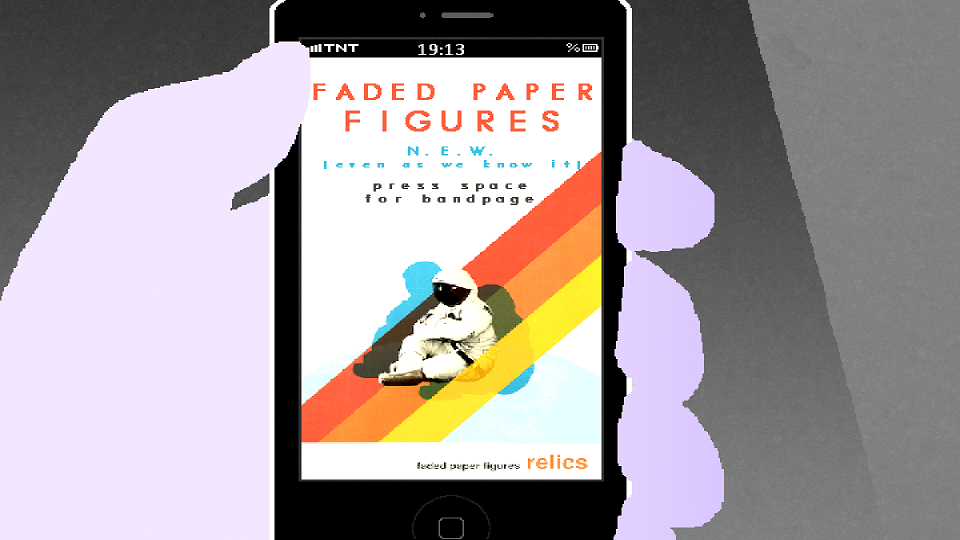
JM: Yeah, I think that’s partly the answer. The conception is kind of different for all the games. So like, our first game, Aquatic Adventure, I mean, I think that was very much Christopher’s idea. And I always wanted to make a game, like, we wanted to make a game together, we were living together as well. So then it just kind of became like, “alright, well, let’s do this.” Like, we made Keep Walking, our first small game together. And he did the art and the programming, and I did the animations for him, and we decided on the music together. And then it was like, “alright, well, I’ll just do all the art so that you can focus on programming.” And the idea was just let’s make something underwater, it didn’t go much further from there. And then we kind of developed it together so we could level design together and we wrote the story together, decided on the monsters and enemies together, and what kind of upgrades, so we pretty much did everything together. But from the beginning I think that was Christopher, and then for Sea Salt, that was a game jam. It stemmed from Christopher wanting to do something with AI or with pathfinding. And I had been playing a lot of Bloodborne so I wanted to make something that looks like Bloodborne, and that was kind of the idea from the beginning. And then we just worked on that, and like, see how we can make this in three days. And then from there, we just saw the potential and we would develop together. But yeah, it was that Christopher wanted to make this kind of game because he’s coding it and I wanted to draw this kinda game, so let’s just put those two together.
And then Post Void was kind of different because I had an idea about an FPS arcade game for a long time. So that’s something that I’ve wanted to do for, I think two years before we’d made it, I had written down that idea and like, we’d just been thinking about it. And we had some other ideas as well going around that we wanted to make. And then we sat down, and we kind of went through that idea. And we’ve kind of seen, like, there’s three potential pathways we can go with it. So we sat together and like, alright, “we can either make it like a racing game, kind of like those old school racing games where you have to hit checkpoints to be able to keep going.” Yeah. So we were thinking, “okay, that’s one way to do it, I’ll loop the levels to make it more roguelike-y, more like, Downwell.” And then the other one is just like, “Have more story and try not to make it as gamey.” And we just quickly decided not to make the story one. And then we kind of combined the racing idea that I’ve had for a long time with the roguelike elements of it. And then Christopher just kind of saw what’s possible in Game Maker, and we kind of went from “how to make the level design” to “what’s possible as well?”
It made sense that Josef had taken on a more significant role as the artist for Y/CJ/Y games, with his art being featured front and center in all of the promotional imagery for Post Void as well as the moment to moment gameplay, as well. Now, I am sure that anyone who has seen even a snippet of the title has seen the vibrant and frenetic visuals on display. The style leaps from the screen and gives the game an elevated sense of energy that transcends its insane moment-to-moment run-and-gun gameplay loop. Eager to learn how this style was developed, I asked Josef if there were any specific artists or artistic movements that influenced or informed the style he has crafted for himself?
JM: Well, it’s, yeah, it’s weird, because like, I didn’t really think I would be drawing for a living. In the beginning I always liked drawing, but I never really did it that much. More of a musician, both me and Christopher were more musicians from the beginning. So like, we just kind of fell into that role, because I was really bad at programming. But it’s weird, people say that, but I don’t really see my style, like the first two games Aquatic Adventure and Sea Salt as having a real style. Like, I don’t see myself in them too much. I do see it in Post Void a lot, because that’s kind of how I draw by hand. And like, I think it’s weird because we’re making this game called Keep Driving now, which is a pretty different style change again. So it’s more realistic even though it’s pixel art. But it’s going to be very, like, grounded and naturalistic. And I don’t really have that style anywhere else. Like I don’t do that when I’m drawing by myself or sitting with paper, or with oils or anything like that. But with Post Void it was definitely an extension of how I would normally draw by hand. And I think for those it’s like Ralph Steadman. Like the Gonzo artist who worked with Hunter S. Thompson
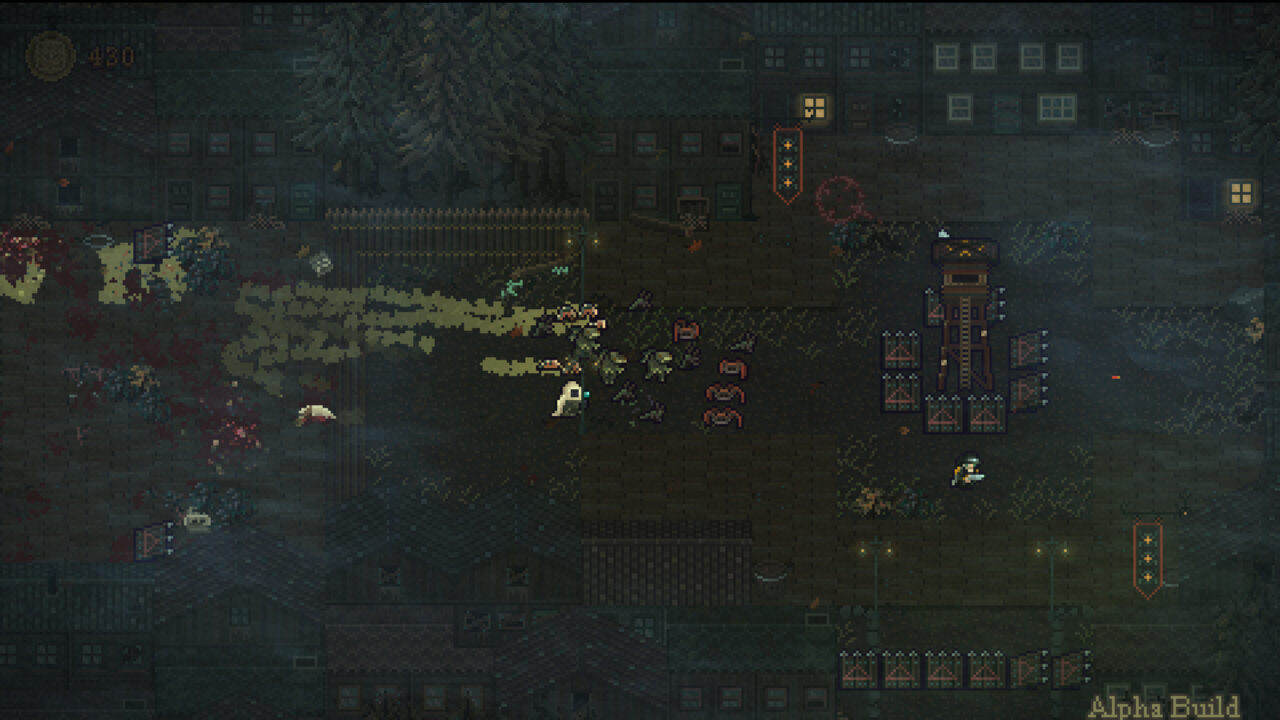

I had of course seen his work, it was famously used in Fear and Loathing in Las Vegas.
JM: Yeah, exactly. Like, I loved him when I was little, that was like my big inspiration. So I think that was like the main thing that kind of stuck with me since I was like a teenager, like 13 or 14, I really liked his art. And then I think one big influence was Francis Bacon. And that after I saw Francis Bacon‘s paintings like in real life as well, I went to a museum that really changed my perspective of how to use color because otherwise it was the shapes of the bodies and hands and how the faces and all that that I was doing, but like black and white, but then seeing them like real I was like “oh shit, you can do that with color as well, like you can really just explode with color.” So that’s why Post Void is also really, really colorful. I wanted to push that even further…
That’s the thing that Post Void was kind of working with because I draw a lot with ink outside of games. And I love the way that ink kind of splashes and does its own thing and lives on its own. And I was like, “how do you do this with with pixel art?” Like, how do you get that splash effect? So the cover art is actually ink. So it’s real, but like in the game, we were trying to do that similar kind of look. So like, lines aren’t completely clear, and aren’t like that normal pixel style of being perfect, or sometimes they’re too thick, and sometimes they’re too thin and all that, kind of the way that it looks when you’re drawing with an ink pen. Do you know Gustav Klimt He’s an Austrian painter. And he’s really known for his painting called The Kiss. He has really cool paintings for nature, his nature paintings are amazing. I think he’s known more for the people that he paints but I love his nature paintings. And I think that came into Post Void a lot. I wish I was better at it, but one day, I hope we can get more of that into a game.
After taking a moment to view the art of Gustav Klimt, I immediately recognized his works, his use of vibrant colors in combination with neat linework makes his paintings pop and gives them a surreal feeling.
JM: Yeah, exactly. The Birch Wood Forest, I saw that and I was like, “we need that in Post Void.” So I mean, it’s almost like a version of that in Post Void with the brown leaves on the ground and the birch trees.
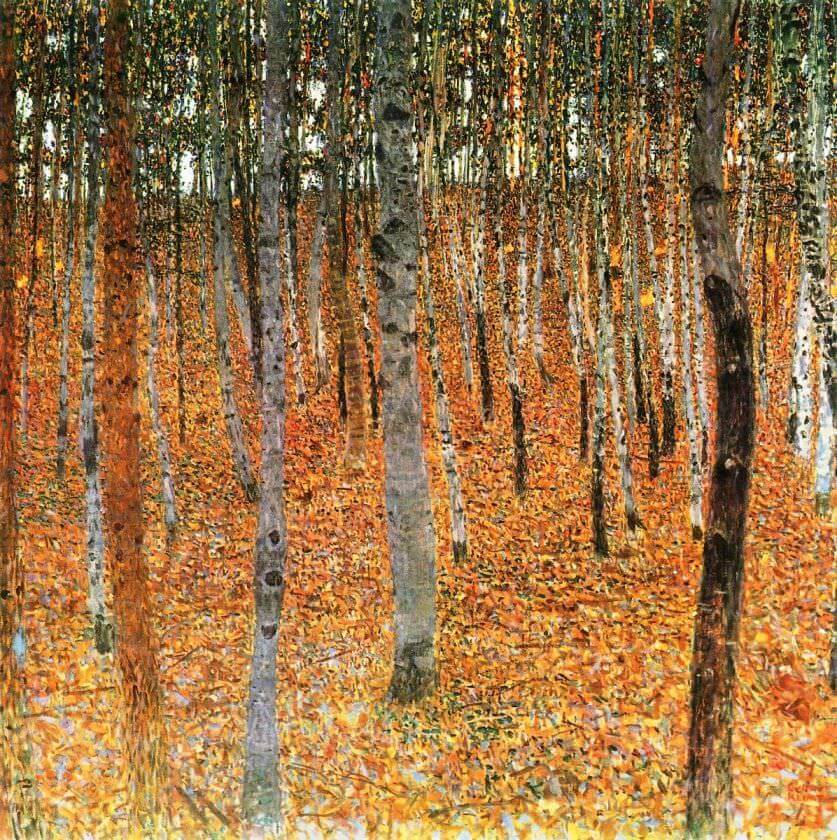
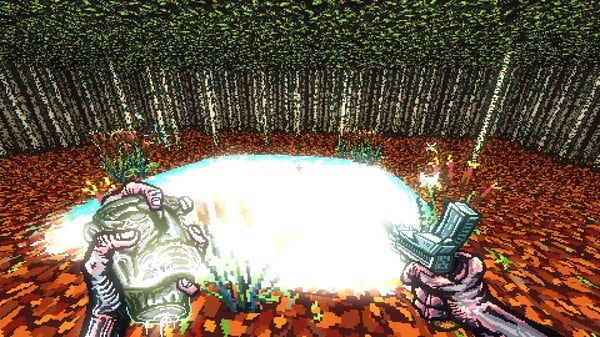
Continuing our jovial chat, I spoke about how much I enjoyed learning about new artists and art movements from game devs, and I hoped that someone reading these articles would walk away with a new appreciation for an artist or artform they were unaware of beforehand.
JM: Yeah, it’s true. I hope so too. I hope someone sees that, and like, it’s one of the things that I hope, I don’t know how often people go to museums, like America has these incredible museums, they show off all the paintings from the world and from 100 years ago, 200 years ago. It’s a shame, I don’t know how often they get incorporated into modern games, game culture, or like, film culture either, maybe they do.
I absolutely understood where he was coming from, while I do think that there are devs who draw inspiration from the plethora of classic art that came beforehand, there was seemingly a movement in the world of independent game development that aimed to break ground visually by eschewing traditional aesthetics in order to draw attention to themselves, while simultaneously avoiding things that are beautiful to create more haunting and memorable visual landscapes.
JM: Yeah, that’s true. I think avoiding things that are beautiful is an interesting way to put it as well. Because I think that definitely comes into play, like people are always trying to go to like, I mean, I do it as well, but like going the grotesque way, or just trying to be as assaulting as possible, in a way. Instead of like, seeing the things around you in a different way. It could be beautiful, but it could be kind of noisy, or incomprehensible or stranger than what you’re normally used to. But just that change of perspective, I think is interesting, and it can be beautiful.
I agreed with the sentiment, and I really appreciated the chaotic style of Post Void, it managed to feature so many warm and vibrant colors which contrasted against the grotesque and jarring design of the enemies and items. I told Josef “I just like playing, I don’t care if I can’t get past the fourth or fifth level, It’s a great game to look at, and it’s a lot of fun”
JM: Yeah, it’s hard for sure. We purposely did it so that it should be fun from the beginning. And we always wanted all the upgrades and everything to just feel like you’re never losing. So when you start over again, you don’t feel like you’ve lost a lot of progress or anything, or felt like you’re slow or weak again.
I feel as though Y/CJ/Y has succeeded on that front, as it feels like the player starts at 110% and only gets stronger from there. Moving on from Post Void, I wanted to talk about the variety of their released titles. I have a lot of respect for devs that don’t limit themselves to one genre. As a mediocre punk musician I know how easy it can be to put yourself into an artistic box purely out of convenience, so I find the willingness to experiment and leave your comfort zone admirable. With this in mind, I asked Josef if there were any genres that they had not gotten to, that they wanted to work on in the future?
JM: Well, I think that the next game, Keep Driving, is going to be the biggest shift of genres that we’ve ever done. It’s going to be like a management RPG, almost. But also with a weird puzzle element to it. So it’s pretty different from everything else we’ve done. But it’s weird with genres, because I’ve also thought about that, the fact that we’ve changed genres the whole time. Like, I don’t know if it’s that we’re afraid to stay with the same genre, and maybe that fear of like, “Oh, what if we don’t make it better?” Like, the second time we do it, It should be better, but I think it’s more actually that we’re just curious about how to make things. So it’s just kind of fun to try things and do different stuff. And I’m not really a fan of getting stuck with one genre and doing that over and over again. Especially like, there’s so many, it’s games. I like playing a lot of different types of games. It’s fun trying to make a lot of different types of games as well. I think that’s my answer, at least, I don’t know how Cristopher sees that, because I think we see it differently.
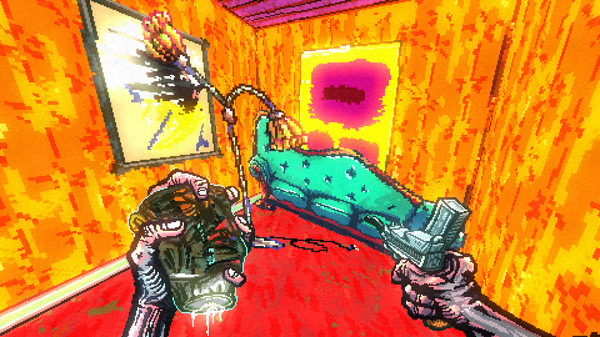
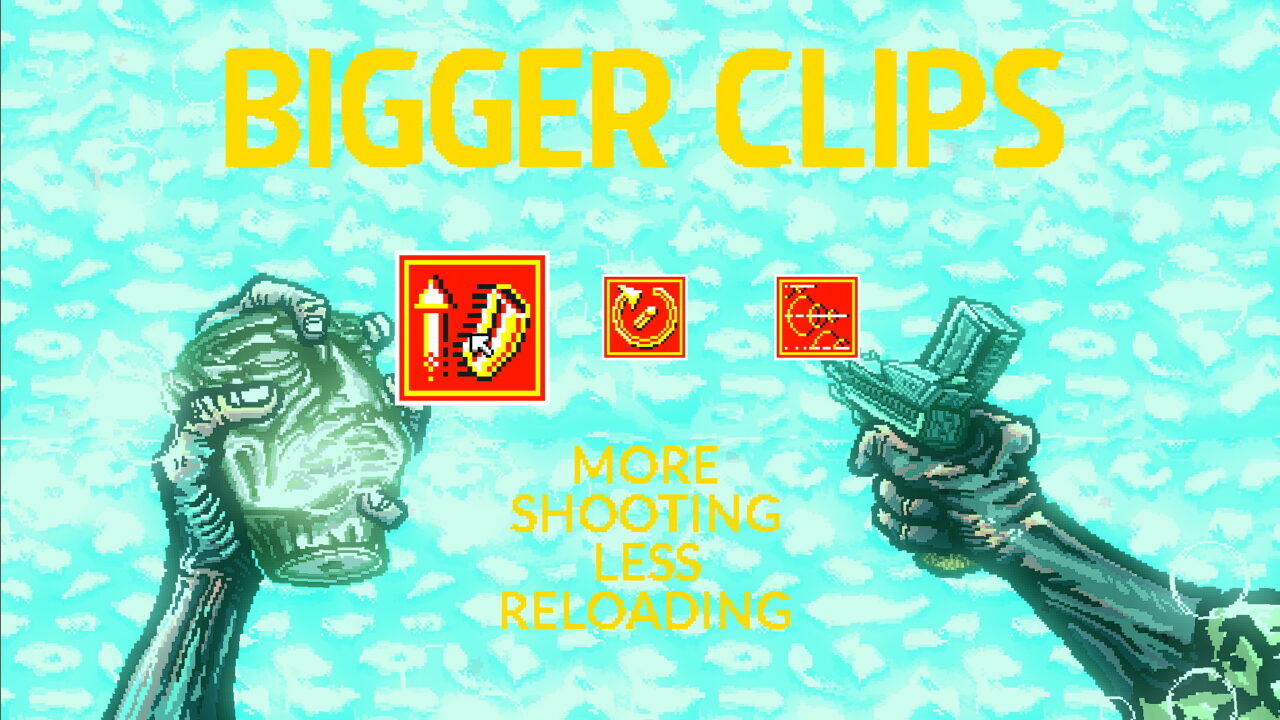
While I understood that Josef did not handle the meat and bones of the coding work, I was still curious to learn if any one genre presented challenges that the others did not, so I asked Josef what he thought was the hardest genre to work on?
JM: I think Sea Salt, well actually, like the real one is Keep Driving. Like by far it’s so much harder than anything I’ve done. But from the ones we’ve released so far it’s Sea Salt, but I think it’s almost the same reason. Because I’m not really good with UI stuff and those kinds of systems. So like when there’s a lot of UI it’s hard for me, and it doesn’t flow freely. I have to like, sit down and think a lot and try different things. It’s not like my normal style either, if I tried to draw something by hand, it wouldn’t look like that. So I have to modify my own style to make it work. So Post Void was by far the easiest, because that’s literally just how I draw normally. So I didn’t think about anything, really, I just did them. And they went really fast, I think I did all those characters in like a week.
It made sense that Josef was able to complete the art for Post Void rather quickly, as the entire project was completed relatively quickly. The project started as a 10-week project but after some complications it became a 20-week project, which is still not a lot of time to develop one of the most memorable indie FPS in recent years. I wanted to know what the mood was like during that hectic 20-week period, so I asked Josef how the morale was during development, were they nervous, or were they confident that Post Void was going to be a banger?
JM: Yeah, I think we actually, at least, I didn’t like the game for a long time. I think Christopher was more accepting of it. But until he broke his arm, I didn’t like it at all. I wasn’t even sure we should release it. I thought, like, “Okay, this is cool. We were doing this for us.” Like it was fine, but maybe not worth being released. Then he was like, “No, we should probably put it out, but maybe for free.” And then I had come around, two weeks later, I was thinking “yeah, okay, free is fine.” And then he’s like, “maybe we should put it up for two, so that it costs something, so we can make something off of it.” And I was like, “I don’t know, it’s not that good.” And then he broke his arm. Then I had like a period of a month, pretty much where he was on morphine. And he had a few operations and stuff, so he couldn’t work on it.
So I had time just to play the game. And like, talk to friends about it and just draw stuff. During that period, I began to really like the game. And I saw a lot of potential in it, and then when Christopher started and got back into it, he was so excited, because it had been a month since he couldn’t work. So he just jumped back into it. He made the, I think the sliding mechanic, and then we tried out some other things and everything just kind of clicked together. I can’t really explain how but that little break, that one month break pretty much helped the whole game, after that month, we worked for two weeks, and we just made the game pretty much where we thought it should be. And then we had that and once we were like “alright, yeah, we should definitely release this on Steam and sell it.” By that point we had 10 more weeks to just fix the game or like, fix small stuff.
I was glad that he had decided to charge for it, because they deserve to be compensated for their work, and the price point was fantastic as well. At only $2.99, I had purchased this game for just about everyone on my Steam friends list that had any interest in FPS gaming.
JM: That was our pitch when we released, that it’s as cheap as a beer. So yeah the cheap thing was definitely because of Downwell. I think we saw it as a like, you can’t really make a good mobile FPS game. So we kind of saw it as an arcade FPS game or like the way that a mobile game is priced. We wanted to price that similarly, but since you can’t have it on mobile, we released it on steam, instead. But it was that idea of like It has the scope and like, the replayability of a mobile game, like Downwell, so we should price it as that as well.
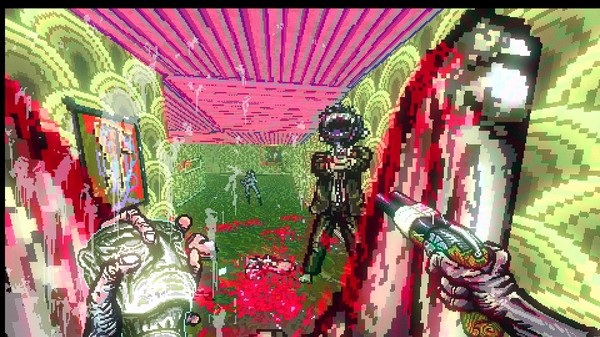
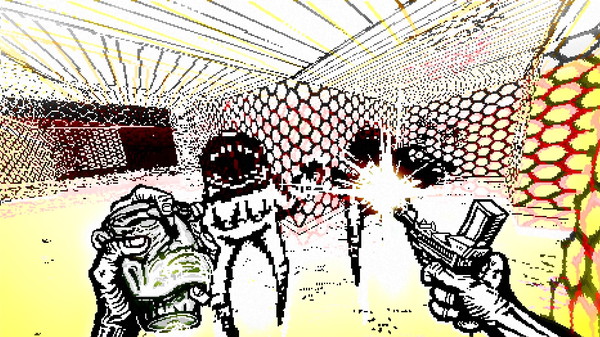
Josef had made multiple mentions of Post Void being an “Arcade FPS” which got me thinking, if there ever was a Post Void arcade cabinet, how would it be controlled, would it be a joystick and buttons, two trackballs, maybe a light gun?
JM: I guess two track balls? Yeah, I don’t know. That’s also the weird part of the problem with it, like, how would you? I think now like now, it’s coming out on Switch. And like, we’ve worked with a porter, we didn’t make it, but the guy who was porting the game, he implemented the controller setup, which would kind of help with that. But now that there is a pretty good controller setup it would work with just having a controller there, but it’s not as cool as having, like, a joystick or something.
I wholeheartedly agreed that an arcade cabinet would need an arcade-style setup. Continuing to talk about Post Void, I wanted to learn about the creation of the killer soundtrack, which was so successful it got a run of delightful splattered yellow vinyl. Eager to learn about the process that went into making this soundtrack, I asked Josef if he could tell me about the process, was it a case where they bounced ideas around before recording, or was there a solid idea about the vibe the team wanted to elicit?
JM: Well, I had like a playlist on Spotify for just songs I thought fit the game. So we were just kind of adding songs to that list. And there was one song for me that stood out and that I was playing the game with all the time called Serafina by Bambara. It’s like, I don’t know, like a post-punky kind of alternative rock band. And that band was really like what stood out to me, I really love that song a lot. like the music video and everything and so when we went to Stockholm to record music, we had no real idea. I just had that idea about what I thought the soundtrack should sound like for the game.
So then, when we hung out, I think Christopher went out with some friends, me and Karl were in the studio. And then I came up with the riff. But I’m not very good at playing. I write a lot of songs, but I’m not very good at actually playing the instruments. So then Karl took the guitar, he’s like, “Alright, I’ll play it.” So that sounded better, and then I played the bass. So I pretty much wrote that, just like the hook. And then Christopher came back the next day, and he’s really good at piano. So then we were just like, “yeah, we wanted solos here. Can you just solo, like, do some stuff there?” And then he played all the solo stuff. Just like almost one-taking it, just improvising. And I was playing a synth as well. And then I think Karl did all the drum beats. But yeah, it was pretty much me and Karl, coming up with a song and then Christopher soloing over it.
I commented that It must have been rad working with a talented trio, each having enough talent to get such a stellar soundtrack made so organically.
JM: It was fast too. Like, it was just one day, so that was fun. Actually, I remember that really fondly. Probably one of my favorite memories of making games actually. That, and me and Christopher’s first years of making games, like, in my mom’s kitchen, and when we lived together. Just being up all night, that was really fun. But also like sitting up late with Karl, and then hearing like the riff and figuring out the drums, and I just like stood up and I was like, “Hell yeah, this is fucking awesome!” and started jumping around, like, we just blasted it. And then we just played that loop over and over again. And we’re like, “alright, this is awesome. If we can listen to this loop over and over again, I think it will work in the game.”
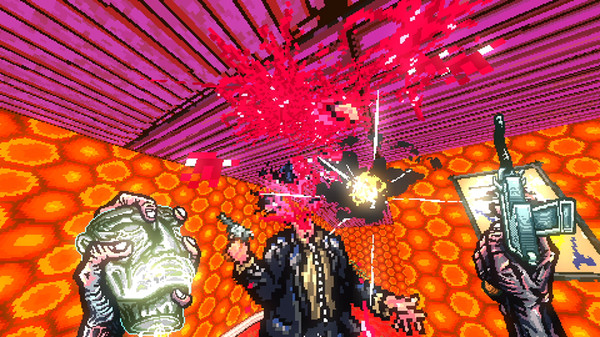
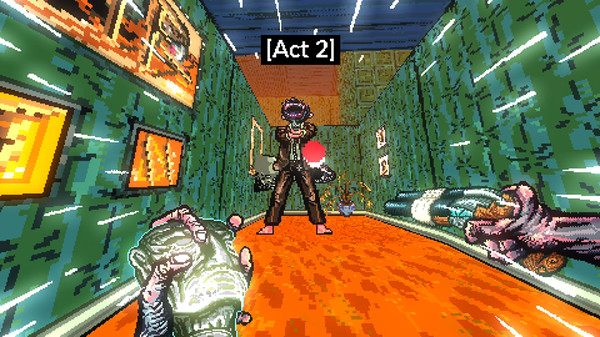
On the topic of getting things done quickly, I wanted to talk about the speedrunning community surrounding Post Void. Considering the fact that this game was made in 20 weeks and initially left the dev team unsure about their project, I was curious to hear how they felt knowing that years later people were still vying to get that number one spot on the leaderboard?
JM: Yeah, I mean, in the beginning, that first year was crazy with speedrunners, and they created a discord group as well. And that was fun seeing them write and like, try to go through everything. Like they literally go through and go through everything and see exactly how to be able to be faster at it. I think it’s even more special for Christopher, I would imagine just because it’s fun. They kind of deconstructed his variables and his choices and speeds and how it’s coded, and figured out little ways to go around things and what could be faster. We knew that speedrunners would enjoy it because it is a time trial kind of thing, and it is about being fast. But it was fun that it actually caught on and people really, really wanted to play it to break the records and how some people were just like, “Okay, I got this one.” And then a few days later, it’s someone else and now I got the next one.
And that kind of engagement was incredible. Like, Our games haven’t really sold that much, So it was pretty surprising and kind of awesome for us. And definitely, I think that they helped, but like, everyone who bought the game helped but it gave a lot of purpose. For me at least in life I just felt like what we’re doing is worth doing now. So I think speedrunners helped with that and like, they were more engaged with giving feedback and talking and trying to get other people excited about it which helps, I think generally, for the whole community, so we didn’t really do much. I think they did all the work gaining a community around it.
On the topic of members of the community showing their love and going above and beyond, I had to bring up Defiler Phil, the current Post Void speedrunning champion. Not only had he absolutely mastered the game, but he had brought parts of it into the real world. Being a masterclass gunsmith, Defiler Phil was able to create a functioning replica of the starting pistol in Post Void. Frankly, that is a very cool and absolutely mad thing to do. I asked Josef how he felt when he saw that gun, what went through your mind the first time you saw him fire it?
JM: Yeah, I think that was one of the peak moments, that was pretty incredible. Yeah, I love Defiler Phil, he’s done some really cool things. I think he made the shotgun as well, and I think he was working on the Uzi. I think he’s done all of them, I’m not entirely sure. But yeah, the pistol was crazy. It was so cool to see that, how he thought about the process of making a curvy barrel and to make it actually function. He was actually working with like, trying to get the loading because the loading in the game is from the top but that’s only because I thought it was more visual that you can see the chamber when you reload, but he said it wasn’t legal, you couldn’t have it like that for some reason. So the actual chamber, you’re loading it from within, like the handle. But he made a functioning loader from the side as well, I think. But yeah, it was incredible seeing that. I think that was, yeah, that was insane, actually, I still can’t believe it. Every once in a while, I’m always thinking like, “There’s a real gun. That is my design. That is just a weird thing.”
I can’t imagine being like a bridge architect or something that, like, draws a bridge. And then like, two years later, that’s a real functioning bridge that stands there for 100 years. That must be insane. But for me, it’s like, we didn’t even ask for it or anything, it just happened. I think that makes it more special that someone else decided that that’s what they wanted to put their time into, and make. And also, like, make it to the point that it functions. I mean, he’s a gunsmith, so if anyone could do it, it’s him.
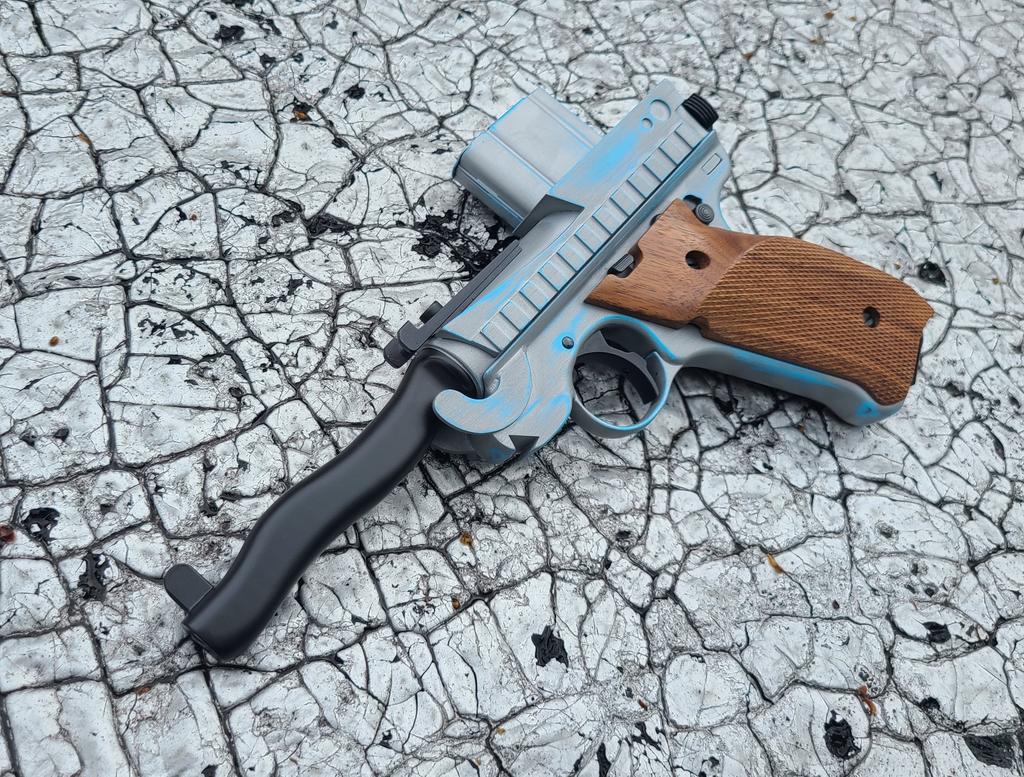
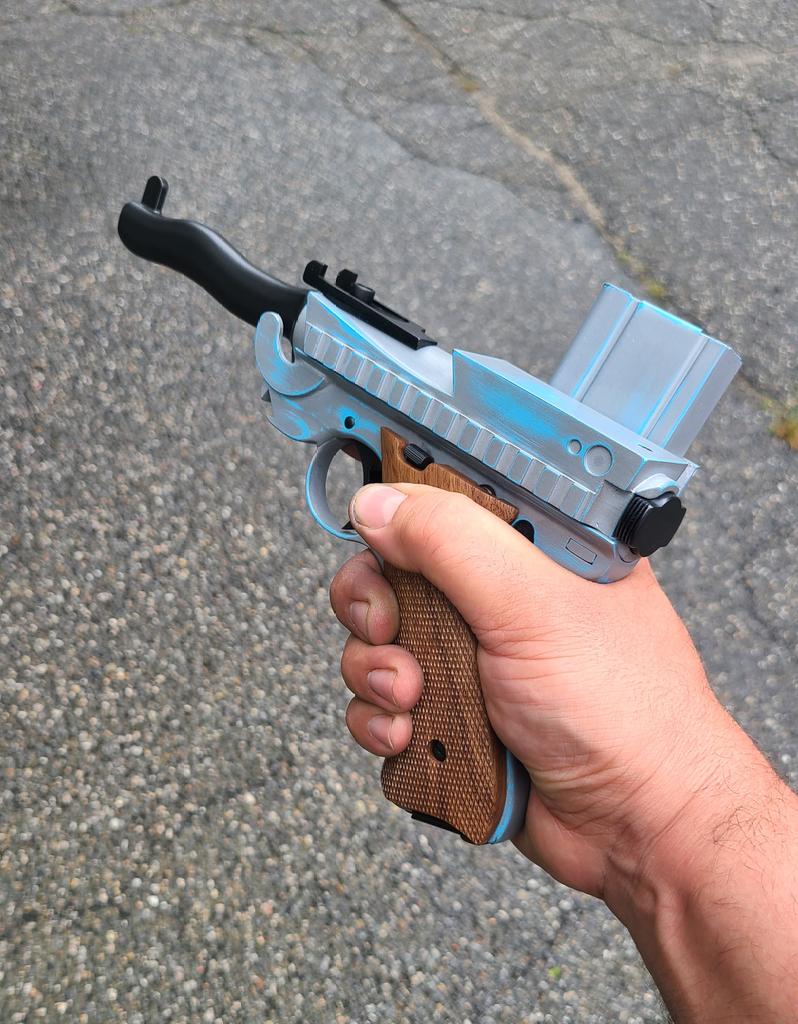
Wrapping up my questions about Post Void, I felt as though, given the success of the title, and the fact that the the vinyl soundtrack sold out rather quickly, people were genuinely invested in Post Void, and while it is hard to say whether it is the style or the shooting that keeps them interested, I think it is safe to say that people would welcome another title in this universe. With that in mind, I asked Josef if he had considered revisiting the world of Post Void in any future projects?
JM: I mean, the world of Post Void is pretty much my world, or the way I see it. So I think I definitely want to revisit that, because I just like those, a lot of the characters and drawings were just drawings that I do in my spare time. And that’s how I kind of see things. And that story was more of a like, I mean, that’s not a story, but like, the way it kind of developed, it developed into like, more of what my life, or like, how I was thinking about things at the time as well. So I wouldn’t go back to exactly that, but it would definitely be in that vein. And I’ve really wanted to make smaller games again, and Christopher as well, which we’ve talked about, what we really want to make. I wouldn’t say, like, another Post Void, exactly. But with that similar art style, at least, and with that scope for sure. And I think that’s actually what we want to do, like, in the future as well, I mean, not for a long time, I don’t think we want to go back to making big games really, again. And like, I don’t know, at least for me, I really enjoyed that kind of creative output of being able to draw something by hand and then put it into the game and be able to be pretty fast about it. It’s exciting and fun, and kind of passionate and very, it feels creative, in a nice way…
And I think it’s more natural. The problem with doing that, though, is you can fall into a pattern, it kind of became the same thing. Which is also something I don’t want to do, but at the same time, maybe I’ve been thinking about that, like maybe it’s not such a bad thing. Having the look be more similar, even though the gameplay can be different. Like now, even besides the fact that it’s pixel art, the look has been changing a bit as well as the games. But if we make them look kind of similar, kind of like the way Sokpop does, or like Cactus Squid, like his games always kind of look similar to each other, but they’re very different from each other. And same with Sokpop, they all look similar, but they’re very different… While I don’t feel like we as a company, like, Y/CJ/Y has a style because I hadn’t really found a way to get that into the game until Post Void. And now that I have found it and how to get into a game, I feel like I kind of don’t want to get away from that, I want to like, push that further and see how deep I can go into that hole.
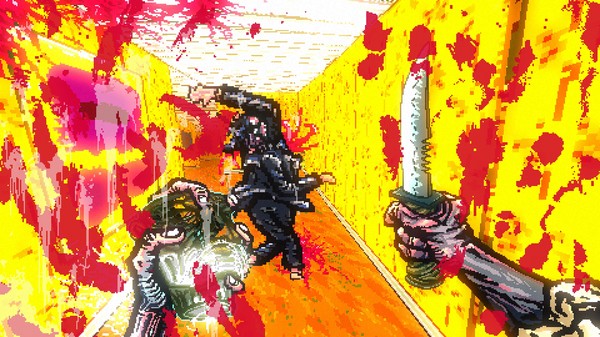
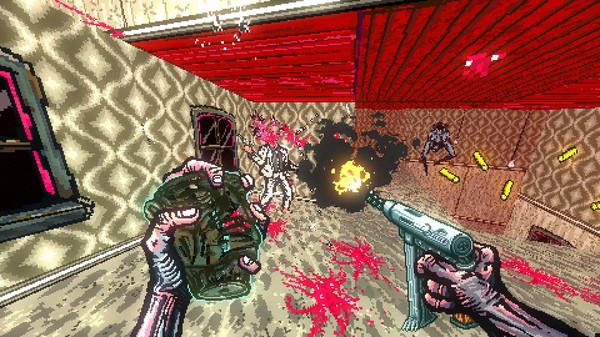
I loved to hear that, because frankly, the style and the energy was what drew me in initially. I think I was sold within the first 5 seconds of the trailer, so I would gladly pick up any game in that style. Moving on from Post Void, I wanted to know more about the future for Y/CJ/Y games. Taking a look at their website revealed that they had been working on their next title Keep Driving for quite a while. I asked Josef if he had begun working on Keep Driving before they started Post Void, and if he could tell us about what to expect from the upcoming title?
JM: Before Sea Salt, we started working on it in 2017, I think immediately after Aquatic Adventure we jumped into Keep Driving. And at that point, we actually didn’t know what it was about. We just wanted to make a road trip game, but we had no idea what it was going to be about or how you’re going to be able to play it or anything. So we worked on it for a year and got nowhere. It was pretty disheartening and not a fun time. I think we were working constantly on it and other jobs because we weren’t making any money on games. So on the weekends I was working at another job, I had a job and then every other week or so I was a teacher at a middle school. So we were really getting nowhere with it, but then we kind of came back to it after Post Void, we were like, “Okay, this time, we can do this. We’re better developers.” So we jumped back into that game. And we worked again, unfortunately, the same way, and we just started working a lot. And then we’re like, “Wait, what are we actually doing again, are we making the same mistake that we did the first time.” And then we did a talk at our old university, about the development of Post Void. And we kind of learned from our own talk that maybe we should sit down and plan the way we did with Post Void. And maybe that’s why it turned out good because we actually sat and planned it. Even though it was a short planning, we still planned it. So then we sat down and we made a version of Keep Driving, as a card game. We kind of figured out everything we could figure out mechanically about the game. And it was two weeks of just making a board game, or a card game out of it and playing it with friends and seeing like, “Alright, what do we need to do?” And all that and then we kind of just sat down like “alright, well, this is actually pretty fun, like we can, if we flesh this out and make it systemic, we can make this into a pretty fun game.” So what it turned into was a road trip management RPG.
So it’s very inspired, like, weirdly inspired by Diablo. But there’s no combat, you don’t even control your character. You’re always driving to the right but you’re deciding where to go, through a procedurally generated map. While the map is generated, it’s not generated, like to be completely random, it’s more like FTL kind of generated, but also looks more realistic. So the roads kind of generate to flow into each other. And you can open up new roads and find shortcuts. And there’s all these cities as well in different areas that have different types of cities, and towns. And while you’re driving around you can pick up hitchhikers and gain, like, pretty much a party that you can go out on your adventure with, and on the road, and this is where it gets kind of weird. I’m pretty bad at explaining it, you pretty much fight against the road. So like different things come up and you have to beat those challenges through a card mechanic that we have. So you gain these abilities while you’re driving and while you’re doing things in the world and leveling up your skills. And those abilities let you bypass situations on the road. And that’s pretty much the main core of the game. The gameplay loop is gaining XP and managing your car and leveling up the car and your own character and your hitchhikers as well, and you find quests and your objective is to get to a festival. But yeah, you’re on your way to get to this festival, you’re trying to get there in the best possible way without losing all your money, without destroying your car, and just trying to get there. Kind of the way that Oregon Trail was like trying to get West. Yeah, so it has that, but you’re going to a festival…
It’s been pretty difficult because everything is [procedurally] generated, and the backgrounds are generated through where you are. And it’s a 2D game, so it takes a lot of work to make that function. So when you’re driving along, the backgrounds, which I think have like eight or nine layers of parallax, they all can generate to function well together, and work to create the environment that you’re supposed to be in. Oh, yeah, and there’s loads of cars as well. I think it’ll be interesting with music as well. We’re talking about having real bands in it. Like the way our first game Keep Walking was, like friends and people’s other bands that we think would fit really well. And that you can find the LPs, not LPs, I mean you can find the CDs and play them in your car.
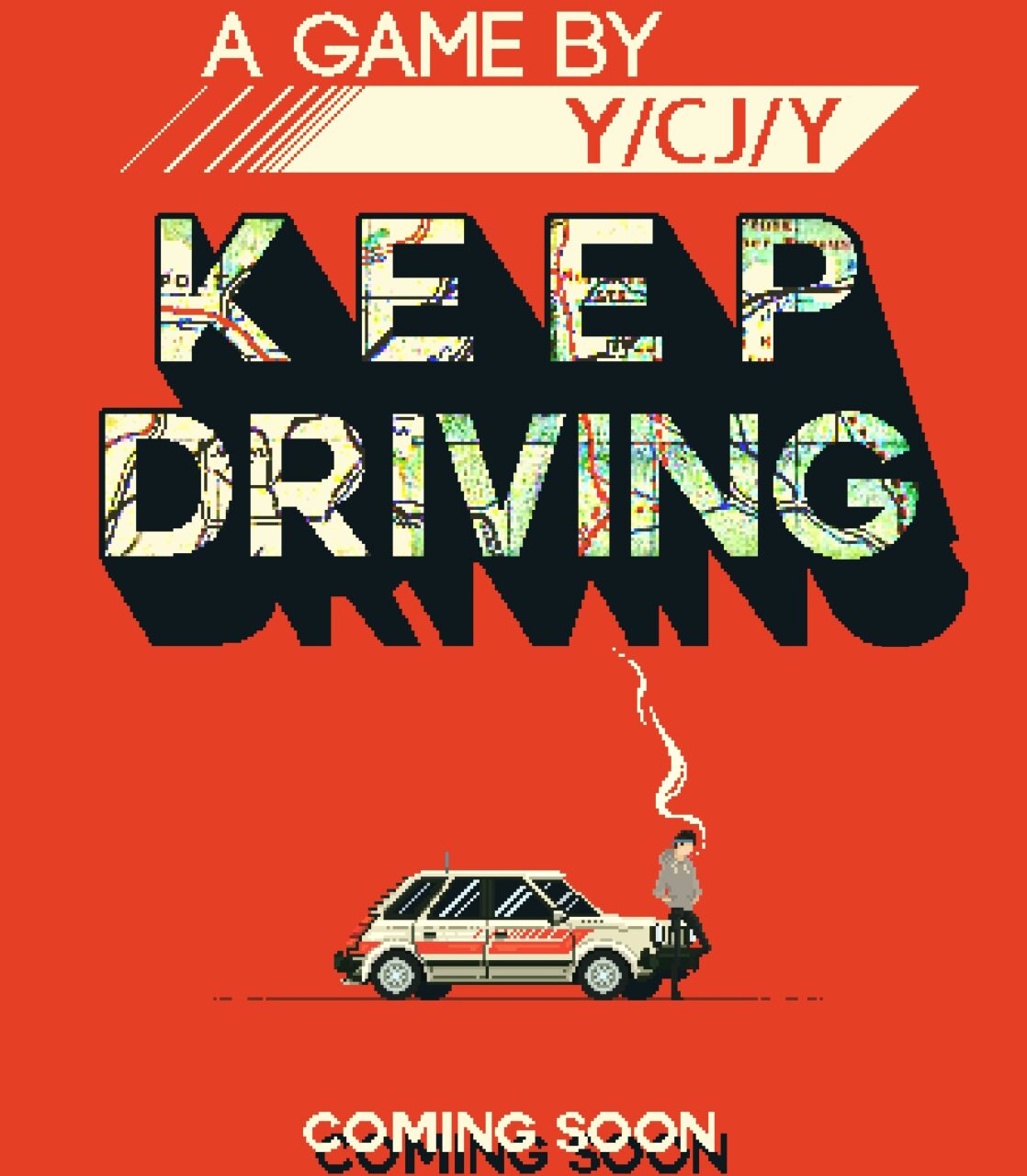
That made perfect sense, every road trip needs a good mixtape.
JM: Exactly, yeah. So we were thinking like, you can find your CDs and then you can kind of create your own mixtapes in the game, like a playlist with songs you like, but that would mean that you need a lot of songs. I think Dropsy and Death Stranding do it pretty well, where they introduced the songs through specific moments in the gameplay. And then once you have them, you can listen to them whenever you want. But I think it’s important to create a connection with the song before you just kind of add it in. Because otherwise, I mean, a player can just turn off the music and play their own Spotify playlist. So we want to at least make the songs impactful to the end, like put them into a gameplay scenario, so it’s not just random stuff.
Seeing as though they had been working on Keep Driving since at least 2017, I wondered if they had put any thought into what comes next, so I asked Josef if they had any future plans beyond Keep Driving, even if it was just doodles on a napkin?
JM: Not really, I mean, for me, I’ve been like, writing stuff and like drawing stuff and all that, but I can’t really tell, or like, I don’t know if that’s gonna be a game or not, if it’s gonna be a game, I don’t think I don’t have any, like concrete ideas. And Christopher had a few ideas, but we have to go through them together and see what the scope is and all that. And like, as I said before, we want to do something smaller. So it’s really important to plan it out and make sure that it’s a scope that we can do in 10 weeks or 20 weeks. I think Keep Driving has at least another year of development. So there’s still time to think of a new game.
At this point I had run through the questions I had prepared for Josef, but as I always do, I asked Josef if there was anything we didn’t get to in the article, or anything that he felt like my dear readers may want to check out?
JM: Nothing specific. I think maybe if you do like the art style, you can check out my Instagram. I put up more paintings and drawings there that aren’t game related at all. But yeah, I don’t follow anyone there, I just put up stuff. So it’s not like a promotion for anything big. It’s just, if you want to check that out.
And with that I wrapped up the interview, I thanked Josef again for taking time from the development of Keep Driving to talk about his history and future in game development. The conversation had given me a new appreciation for Post Void, and left me eagerly awaiting new information on Keep Driving.
If you want to stay up to date on the development of Keep Driving, be sure to visit Y/CJ/Y online at their twitter account, or on their website. And in the interim I would strongly urge anyone who has not checked out their work to pick up a copy of Sea Salt and Post Void (as of writing, all Y/CJ/Y games are on sale on Steam until 01/05/22)
And of course, if you are fiending for the latest and greatest and ghoulish and gruesome gaming, be sure to head back to DreadXP and read more of our frightful features!
Categorized:Interviews

